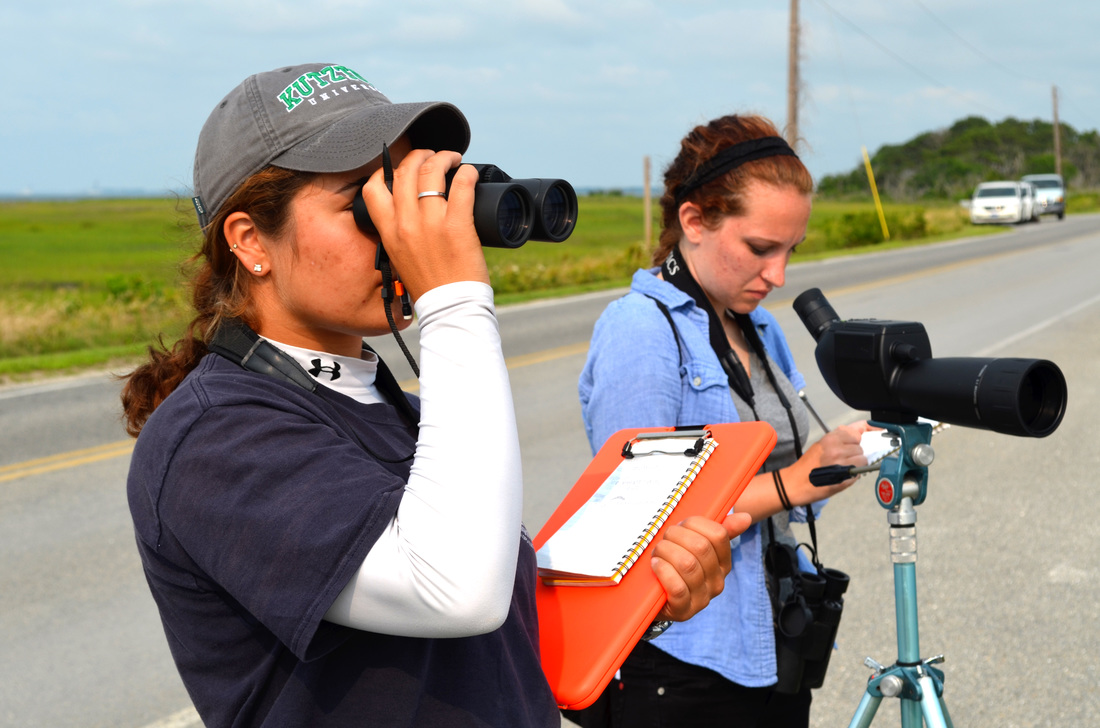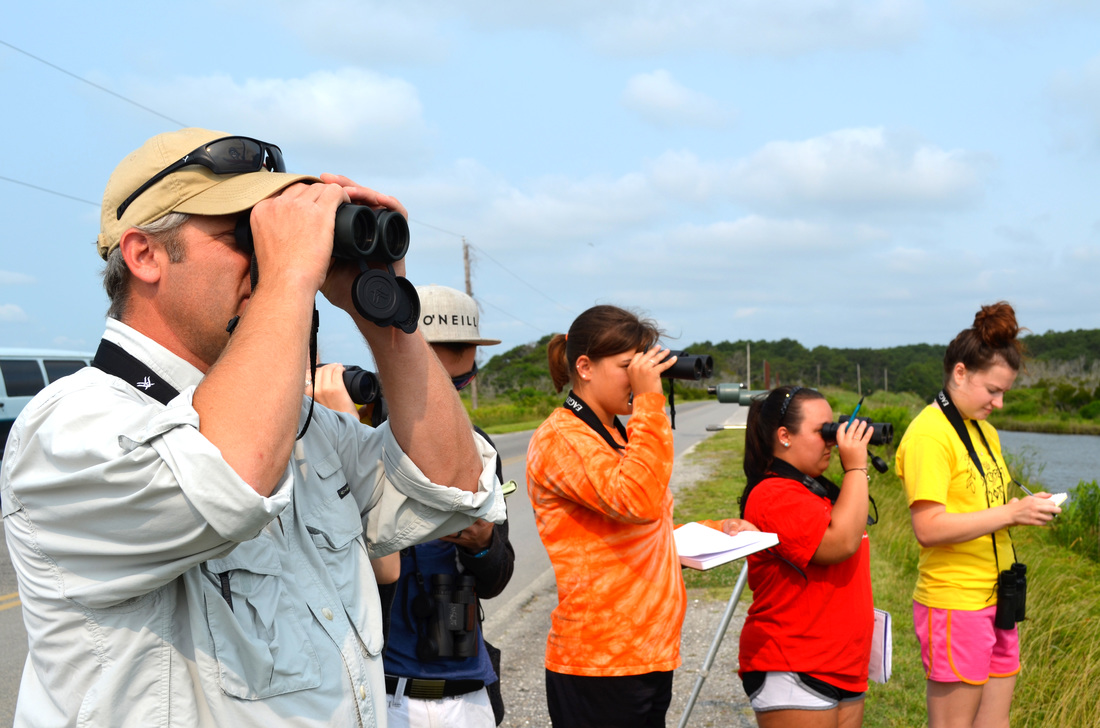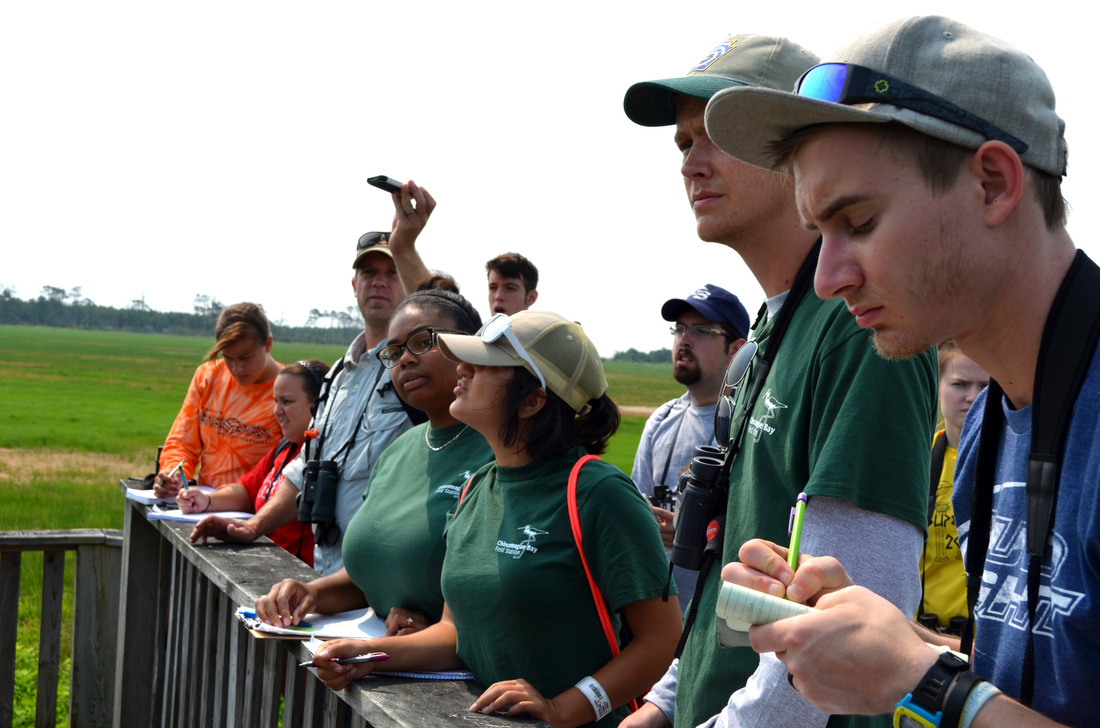|
Session III of our college courses began this week, which means for the next three weeks our students’ minds will be on these three subjects: Conservation Biology, Behavioral Ecology, and Coastal Environmental Oceanography. While the Coastal Environmental Oceanography students are down in Florida for the next two weeks, this week we’ll take a look at Behavioral Ecology, taught by Dr. Horton of Millersville University. Behavioral Ecology will focus on the different behaviors animals have adapted over time to reproduce and survive and why they have the specific habits and inclinations that they do. Dr. Horton aims to have 50% of the course outside, where students can really observe and quantify animal behavior in the wild. On Wednesday, Dr. Horton took the students on the marsh trail to observe the birds on Assateague Island. First, they took the vans to Tom’s Cove to observe the bird life there for an hour, carefully watching different species of birds hunt for fish and interact with each other. Afterwards, they drove to the wildlife loop. Here, Dr. Horton played sounds of different bird calls on the trail to see if he could provoke the male birds into thinking there was another male encroaching on their territory, trying to get to the females. Sure enough, the male birds in the area sang their song in response and flew around, trying to chase out the threat to their claim. The students observed these males and determined where each bird had his territory. On a map, they delineated each territory and quantified the number of males and females they saw there. Though it’s only the first few days of class, students are already excited for what’s to come.
“My first impression of the class is that it’s really interesting,” Joshua of Millersville University said. “I’m looking forward to every lecture and every field trip, especially last night when we went onto a beach and observed ghost crab activity.” “I’m here because I wanted to get out of the lab and get some field experience, and down here is the perfect place to do it,” Zack of Lock Haven University said. “I decided to take this class because one of my concentrations is animal behavior and I thought it would be interesting to get some experience watching animals, trying to figure out what they’re doing,” Donald of Millersvile University said. After returning to the Field Station for lunch, the afternoon was spent not in the lab but at the beach, where Dr. Horton lead a class discussion. Sure, 50% of the class is outlined to be in the classroom, but a classroom can be anywhere – even on the beach! Check back with the Bay Blog in the coming weeks to learn more about the other college courses going on this session!
0 Comments
Leave a Reply. |
About
Everything you need to know about CBFS's educational programs, visiting Chincoteague Island, and more! Categories
All
Archives
January 2019
|
CHINCOTEAGUE BAY FIELD STATION | 34001 Mill Dam Road | Wallops Island, VA 23337 | (757) 824-5636 | [email protected]




 RSS Feed
RSS Feed

